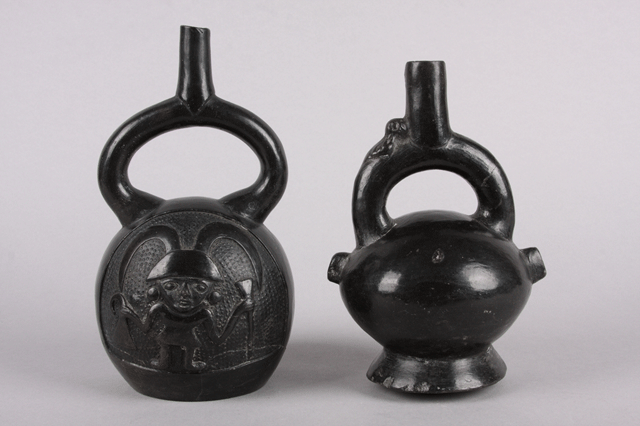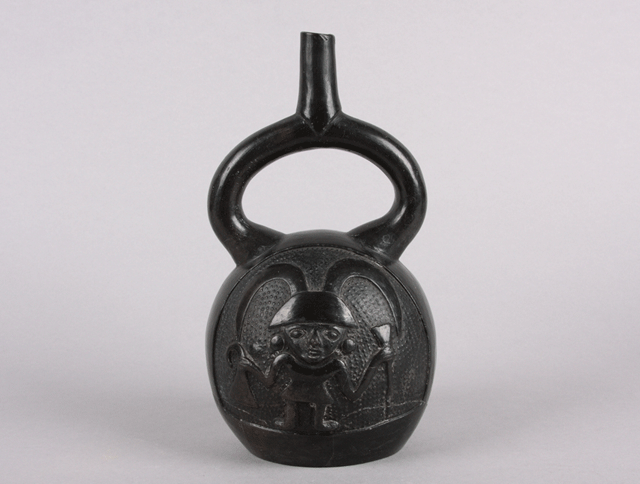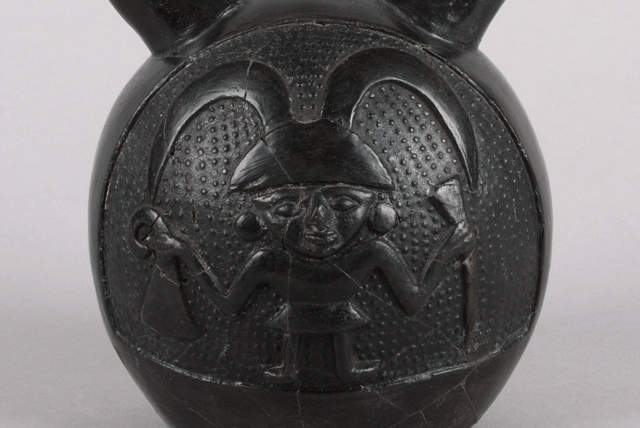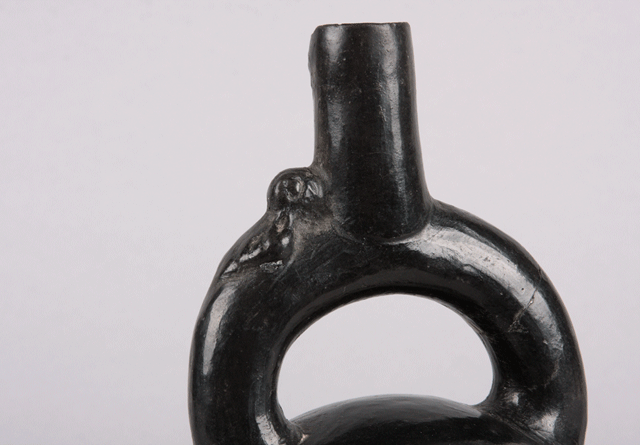
Photograph by B. Bernard

Photograph by B. Bernard
Please don't assume that the Chimú pots in this online exhibit show the full range of Chimú pottery. Plain, "every day" vessels did not interest collectors, so huaqueros (looters) did not bother to bring them in. Such plain pieces of pottery have rarely made their way into museums or books about Chimú art. In contrast, highly polished black ware was popular among collectors. Of the two examples that follow, one has an ornate design and the other is quite simple—but both appealed to collectors.
As a consequence of this black-market filtering
process, the museum is unable to show you the full range of Chimú
pottery. Collections made during scientific study include all pottery
found, so are much more representative of ancient cultures.

57.5.2, mold-made stirrup-spout jar
Middle Chimú period (A.D. 1200–1350)
Gift of Watt Stewart
The individual shown above, with a double crescent headdress, may be the Staff God, a major deity in the Andean pantheon. In the close-up that follows, you can see the details of the molded image more clearly. For a detailed discussion of the Staff God, we suggest an article by William Isbell and Patricia J. Knobloch. The jar is 23.5 centimeters (9 1/4 inches) tall.

Photograph by B. Bernard

40.14.5, mold-made stirrup-spout jar with ring base
Inka-Lambayeque Style (after A.D. 1470)
Probably Piura region, far north coast of Peru
Gift of Dr. D. M. MacCornack
The jar shown above is 21 centimeters (8 1/4 inches) tall. This is a fairly typical size for Chimú stirrup-spout vessels but rather small for the storage and preparation of food and drink. Again, we are seeing a selective bias, including towards the small end of the range for Chimú pottery. While unscientific collections can yield useful information for archaeologists and art historians, they can also be highly misleading.
A second image of the same pot shows the parrot (?) molded into the stirrup-spout handle.
 i
i
Photograph by B. Bernard
To return to the thumbnail on the previous page, click here.
All content copyright © Maxwell Museum of Anthropology, University of New Mexico. High-resolution versions of photographs may be ordered from the Maxwell Museum's photo archives. Please make note of the catalogue numbers. For more information please visit the photo archives web page
Page last revised on March 7, 2011. Please report problems to toh@unm.edu